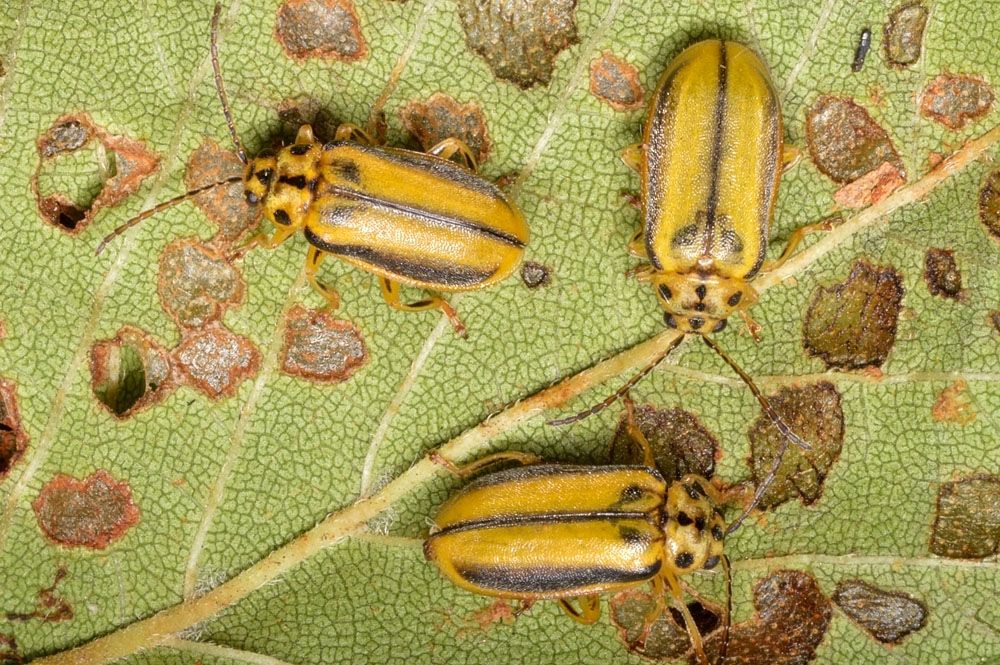
Elm Leaf Beetle – Pyrrhalta luteola
Elm Leaf Beetle – Pyrrhalta luteola
Common Name: Elm Leaf Beetle
Latin Name: Pyrrhalta luteola
Appearance:
Adults are 1/4-inch large olive-green beetles with black longitudinal lines down the back and along the edge. Females deposit yellowish eggs on the underside of leaves in double rows of 5 to 25. Before hatching, eggs turn grey. Larvae resemble caterpillars and are black when newly hatched and shortly after molting. Larvae develop yellowish to green after eating, with rows of small black tubercles (projections). Third-instar larvae can reach a length of one-third an inch and have thick rows of dark tubercles down their flanks resembling two black stripes. Pupae vary in color from orange to bright yellow.
Host plant:
The elm leaf beetle feeds on all elms, especially Siberian and English elms, as well as American, rock, slippery, and another native, Asian, and European elm.
Territory:
The Elm Leaf, The beetle, is native to Europe but has moved to other parts of the world.
Damages caused by Elm Leaf Beetle:
Elm leaf beetle chewing damage can cause partial or full tree defoliation. Leaves severely injured or eaten will turn brown and often drop prematurely. By mid-summer, the entire tree may be defoliated. The larvae inflict the most damage since they feed on the underside of the leaves. Trees that lose their leaves due to elm leaf beetle damage sometimes sprout new growth, which the insects may devour on the tree or later generations of larvae. Elm leaf beetle feeding damage seldom kills an elm tree. However, excessive feeding weakens a tree, leaving it vulnerable to assault by other pests.
Life history and Habits:
Adult elm leaf beetles commonly overwinter within structures; they can be discovered, for example, between bricks where mortar has deteriorated and under loose roofs. They also spend the winter outside, in woodpiles, garbage, and bark fissures. In the North, the elm leaf beetle has one generation yearly; in warmer places, the ages can range from two to three. Adult beetles fly to tree tops in the spring to deposit eggs on the undersides of leaves. Larvae hatch in early June and eat for two to three weeks as they progress through three instars. Larvae eat by skeletonizing the bottom of the leaf, causing the most harm. After consuming enough food, the larvae travel down the trunk to pupate on the ground.
